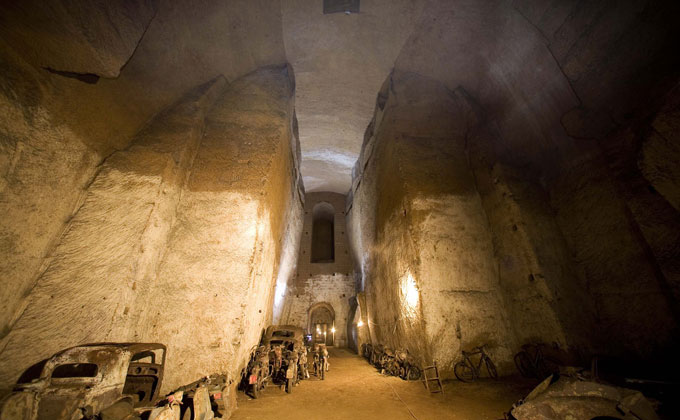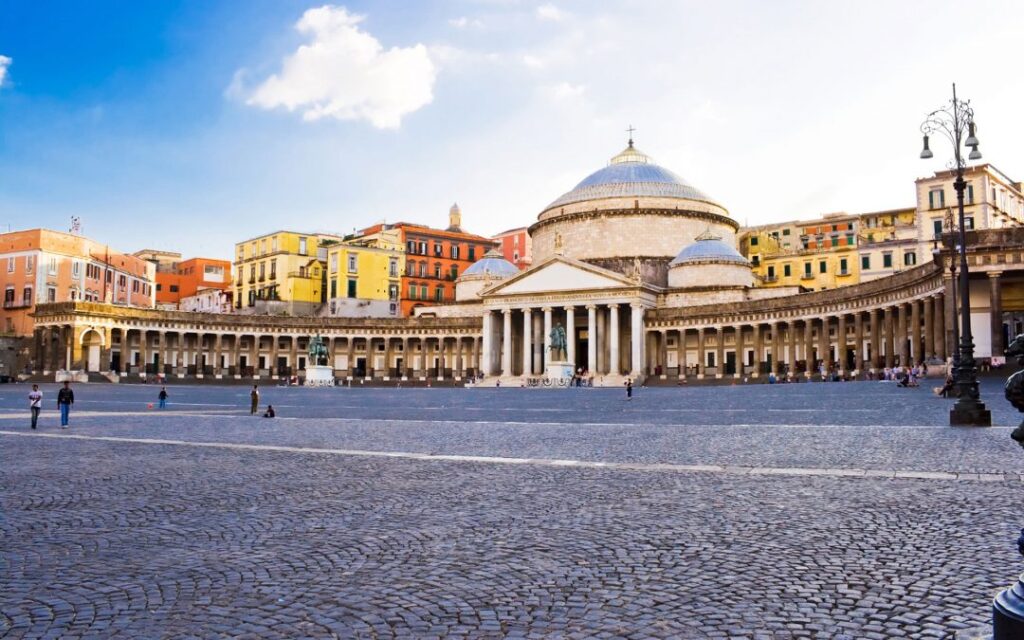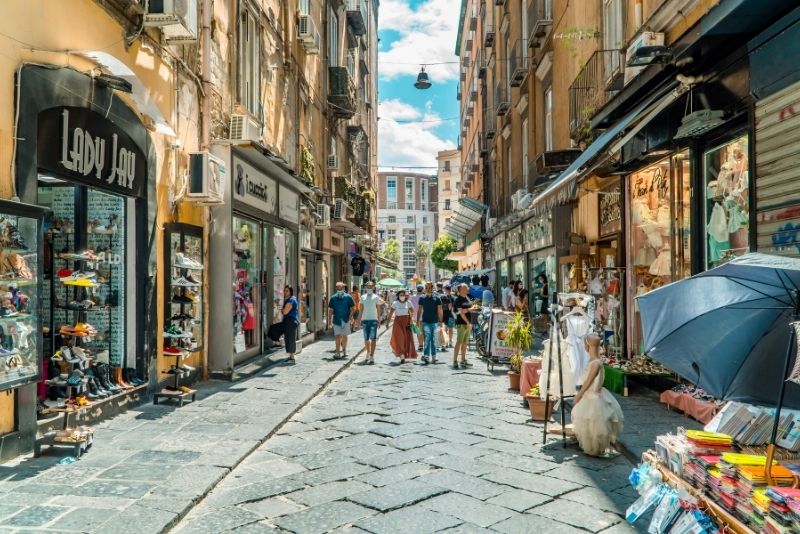
GalleriaBorbonica
Four wonderful routes await you. A mixture of excitement, adrenaline and emotion. Gentlemen, we descend... The Galleria Borbonica is considered the pride of underground Bourbon civil engineering and the 'Standard' route allows you to visit and appreciate it as a true work of art. It is possible to enter from the monumental access inside the Morelli car park or from Vico del Grottone, a few metres from Piazza del Plebiscito, via a staircase built in the 18th century. The route will show the incredible technical solutions adopted by the designer Errico Alvino and the geological problems encountered during the excavation.
One will pass through the rooms related to the Renaissance features of the aqueduct of the Bull, admiring the three bridges and walls built by the Bourbons to cross the cisterns while preserving their functionality; one will pass through the rooms adapted as war shelters during World War II, where numerous objects used at the time have been found. Enormous fragments of statues, and vintage cars and motorbikes, found buried under rubbish and debris, related to the period between the end of World War II and the 1970s, when the Bourbon Gallery was used as a judicial depository by the City of Naples, will be an incredible setting along the way.
Information days and times guided tours

Piazza del Plebiscito
Piazza del Plebiscito (formerly Largo di Palazzo or Foro Regio) is a square in Naples located at the end of Via Toledo, just past Piazza Trieste e Trento.
Located in the city centre, between the seafront and Via Toledo, with a surface area of around 25,000 square metres, the square is one of the largest in the city and in Italy and is therefore the one most used for large events.

Cristo Velato
The Veiled Christ is a marble sculpture by Giuseppe Sanmartino, preserved in the Sansevero Chapel in Naples and made in 1753. Two other copies exist: one in the Church and Convent of Santa Maria del Sepolcro in Potenza
and one in the Abbey of
San Giovanni Evangelista in Parma.
Placed in the centre of the nave of the Sansevero Chapel, The Veiled Christ is one of the best known and most impressive works in the world.In the intentions of the patron, the statue was to be executed by Antonio Corradini, who had already sculpted the Pudicizia. However, Corradini died in 1752 and only had time to finish a terracotta sketch of the Christ,now kept in the San Martino Museum.

Historic Centre
The decumano inferiore, which takes the official names of Via Benedetto Croce and Via Forcella in the central area, but is commonly called Spaccanapoli, is a thoroughfare in the ancient centre of Naples and is one of the most important streets in the city. It is, together with the decumanus major and decumanus superior (decumani of Naples), one of the three main streets of the urban layout designed in Greek times and which crossed the entire length of the ancient Neapolis.Given its origin, it would therefore be more appropriate to speak of plateia and not "decumanus", a name from Roman times that replaced the original by convention. The decumano inferiore became important between the Middle Ages and the 19th century both for the convents of religious orders and for the dwellings of powerful men who lived there.

Museo Archeologico
The National Archaeological Museum of Naples (MANN)is an Italian state museum. By virtue of its rich and valuable holdings of works of art and artefacts, arranged over an exhibition area of 12,650 m², is considered one of the most important archaeological museums in the world, if not the most important in terms of Roman art.
The museum is housed in the Palazzo degli Studi, built in 1585 as a cavalry barracks; the building is architecturally significant, being one of the most impressive monumental buildings in Naples. It also stands on the site of the necropolis of Santa Teresa, a burial area of ancient Partenope.Since 2005, the Neapolis station has been opened in the underground 'Museo' station below it, in which small rooms, one after the other, display the archaeological finds discovered during the metro excavations and which have become part of the museum heritage.
It is owned by the Ministry of Cultural Heritage and Activities, which has listed it as a museum institute with special autonomy since 2014.



